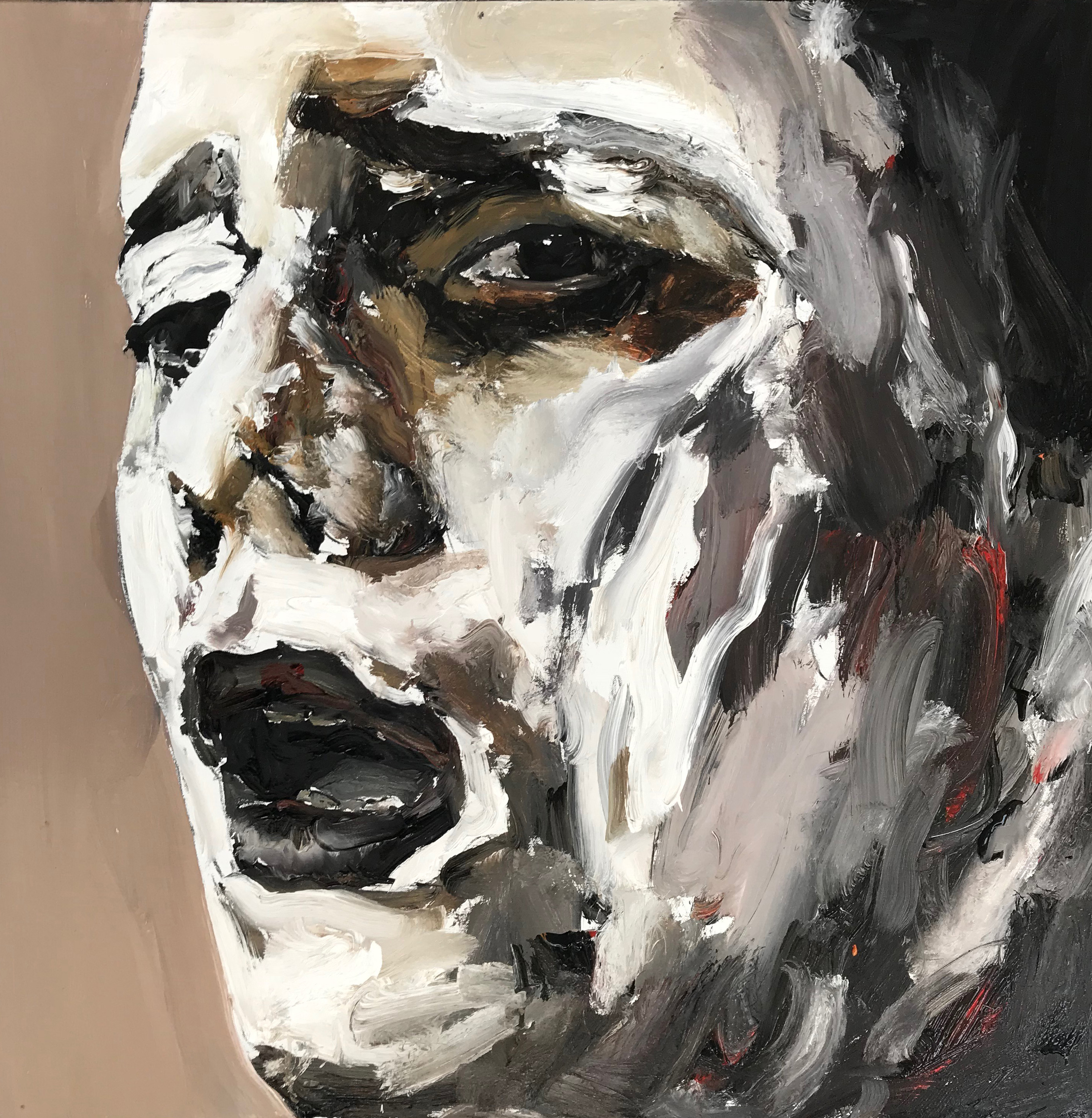
Santiago’s self-portraits are especially expressive. They are based on a photo series in which he is seen in a snowy landscape with his face covered in white cream. These paintings examine the primal origins of human nature. They depict the animal in the human.
Santiago’s painted animals are a quotation of the long tradition of animal portraits found mainly in English, Spanish or Dutch Baroque painting (i.e. by Diego Velázquez or the Dutch painter, Frans Snyders). When viewing Santiago’s painted greyhounds with a Berliner’s perspective, one might think of Frederik the Great’s greyhounds. The representation of the most beautiful horses, dogs and particularly glorious hunting animals were used to illustrate the pride of their owners, while simultaneously letting the owners be associated with the gracefulness and strength of each depicted animal. With an ironic undertone, Santiago grants modern-day house pets (such as canaries or cats) the same status. The artist enlarges these animals to a gigantic scale as well, in which they retain something rather endearing, innocent and positive about them on the one side, but are also given monstrous features and a certain threatening appearance on the other.
Likewise, the paintings belonging to the series “dirty snow”. They portray the female high-diving athletes that Leni Riefenstahl captured on film in her documentary “Olympia” from 1938. In this series, Santiago examines the emergence of National Socialism and the preceding decades that provided fertile ground for this atrocious worldview to grow. Riefenstahl’s imagery of perfect, well-trained bodies and the higher aesthetic of their staged composition are definitely appealing, but one cannot ignore the thoughts on conformism and the subservience of art for the purposes of Nazi propaganda.
There is a common thread bringing Riefenstahl’s perfect bodies, the self-portraits and the animals together. At the same time, these subjects are both fundamental and centuries-old topics of art history.
Meanwhile Santiago Ydanez (Jaén 1967. Spain) is one of the most established spanish artists of his generation. He was honoured by the following prizes: Premio de Pintura ABC / 2002, Premio de Pintura Generación / 2002, Caja Madrid, Beca del Colegio de España in París, Ministerio de Cultura / 2001 und den Beca de la Fundación Marcelino Botín / 1998.
Ydanez work was shown and collected by institutional collections like Fundación Botín (Santander), Museo Nacional Centro de Arte Reina Sofía (Madrid), Museo Sofía Imber (Caracas, Venezuela). Moreover he is represented in 17 spanish museums. (Galerie Martin Mertens press-release)
Galerie Martin Mertens. Linienstraße 148. 10115 Berlin
Image: Santiago Ydañez
